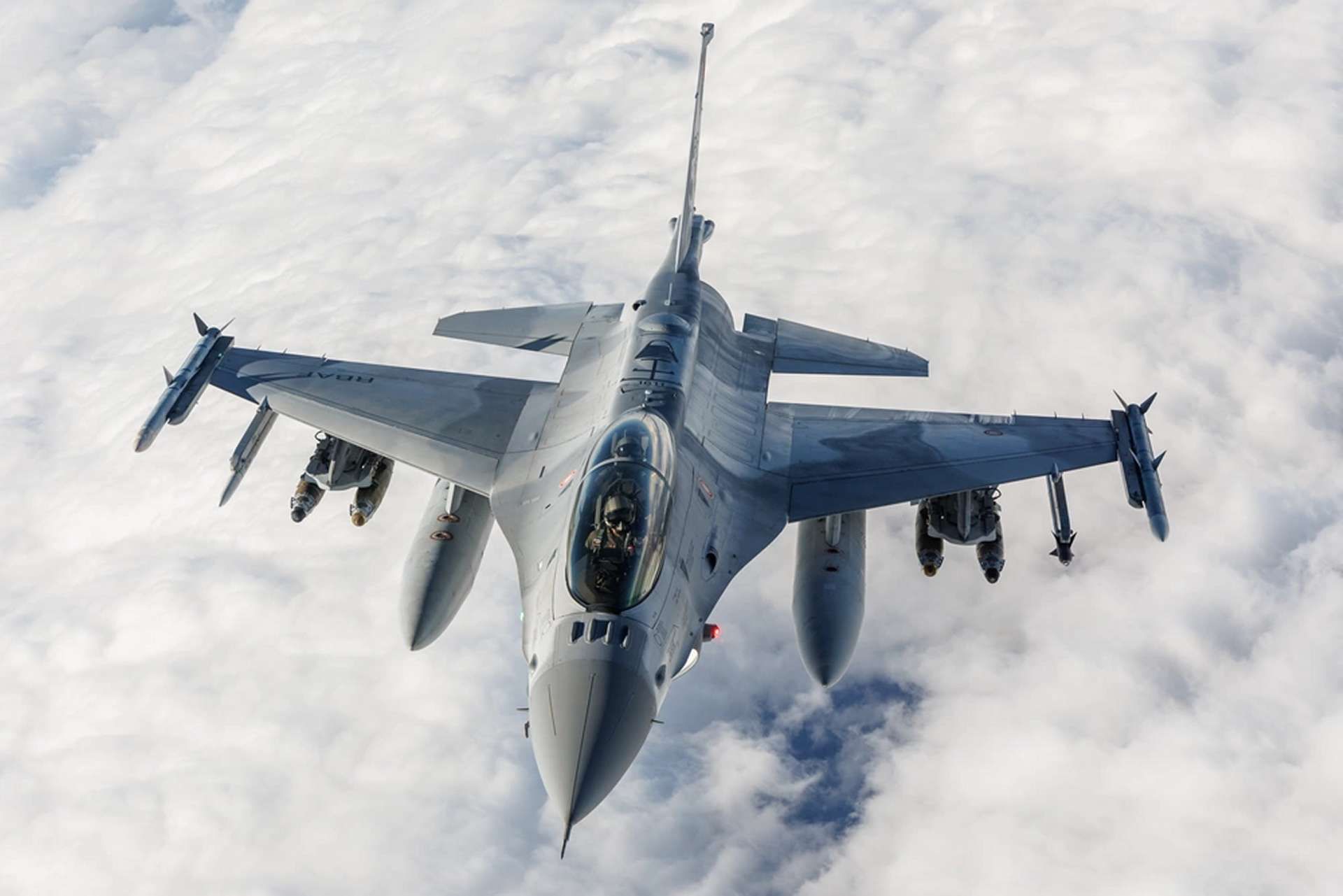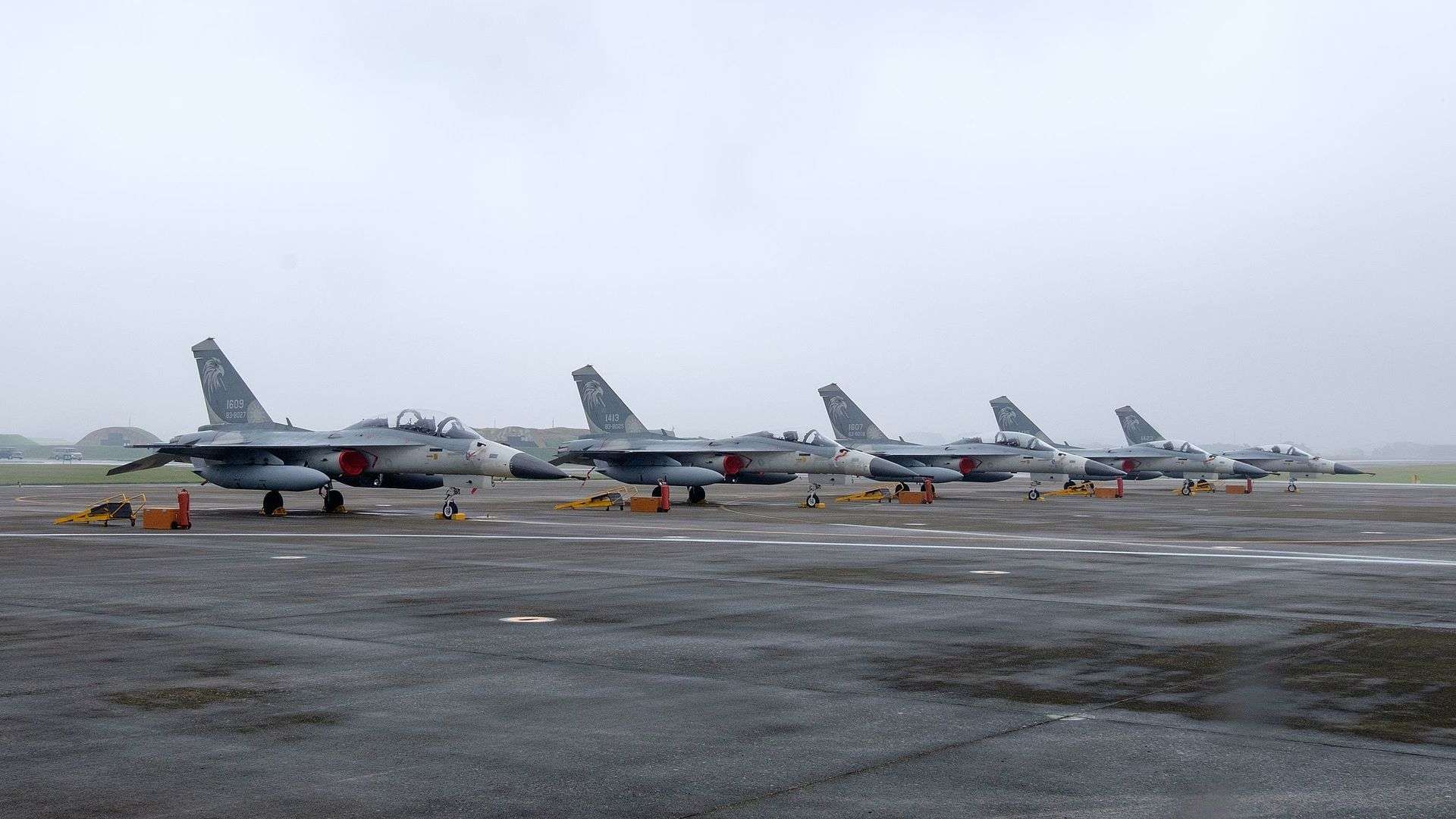Breaking News
Taiwan to receive first F-16 Block 70 fighter jet by end of September.
As reported by Liberty Times on September 12, 2024, Taiwan is set to receive the first of its 66 F-16 Block 70 fighter jets by the end of September, marking the beginning of a significant delivery for the island’s defense forces. The handover of the aircraft, delayed from the initial schedule planned for last year, will be observed by senior Taiwanese Air Force officials, a delegation from the U.S. military, American instructors, and the U.S. reception team.
Follow Army Recognition on Google News at this link

New production orders for this variant began in 2017 when Bahrain became the first customer to order newly built F-16 Block 70 aircraft. (Picture source: US DoD)
The F-16 Block 70 variant, also known as the F-16V, has been purchased by several countries. Lockheed Martin, the manufacturer of the F-16 fighter jets, has already delivered this new configuration to Bahrain and Slovakia. Following the arrival of the first batch later this month, Taiwan will become the third country to receive the F-16 Block 70 fighter jets. The procurement was made through a special budget allocation of over TWD 247.2 billion ($7.686.017.474,64), which includes not only the aircraft but also a range of advanced munitions and support equipment.
In 2023, Taiwan secured a comprehensive military acquisition package from the United States, which included advanced weapon systems such as AIM-9X and AIM-120C air-to-air missiles, AGM-88 anti-radiation missiles, Joint Direct Attack Munitions (JDAMs), and AGM-154 Joint Standoff Weapons (JSOW). This $1.4 billion deal aims to enhance Taiwan's defense capabilities, particularly its ability to conduct precision strikes with its F-16 fleet. There are also speculations about the potential inclusion of the AGM-158 Joint Air-to-Surface Standoff Missiles (JASSM) to further strengthen Taiwan's long-range strike capabilities.
Additionally, in July 2024, Taiwan signed contracts with the United States to acquire MS-110 multispectral airborne reconnaissance pods and Infrared Search and Track (IRST) pods to enhance the capabilities of its F-16 fighter jets. The MS-110 pods, worth $343 million, will be delivered by 2025, enabling advanced surveillance and target detection capabilities. Meanwhile, the IRST pods, part of a $344.35 million deal, will help the F-16V Block 70/72 jets detect stealth aircraft by tracking heat signatures up to 150 kilometers away, improving Taiwan's air defense against modern threats.

Following the arrival of the first batch later this month, Taiwan will become the third country to receive the F-16 Block 70 fighter jets., following Bahrain and Slovakia. (Picture source: US DoD)
Parallel to these new acquisitions, the Taiwanese Air Force is advancing personnel training. According to the Ministry of National Defense's publicly released budget for the next fiscal year, the Air Force plans to send 65 personnel to the United States throughout the year for further F-16 training. This program, costing approximately TWD 36.649 million, is expected to provide tactical training for Taiwan's pilots and expand the pool of qualified instructors.
The delivery of these aircraft has encountered several delays due to various factors. Despite Taiwan's repeated requests for Lockheed Martin to adhere to the contractual terms and the delivery schedule, the handover has been postponed multiple times. The Foreign and National Defense Committee of Taiwan's Legislative Yuan has maintained close scrutiny over these delays. During a legislative inquiry, General Lee Shih-Chiang, recently appointed as the head of the National Chung-Shan Institute of Science and Technology, stated that two project managers from Lockheed Martin had been replaced. Additionally, former Air Force Chief of Staff General Tsao Chin-Ping noted that Taiwanese personnel stationed at the production facility had been withdrawn.
The F-16 Block 70/72, also referred to as the F-16V, is an updated version of the F-16 multirole fighter, developed by Lockheed Martin. This variant incorporates various technological upgrades and modifications accumulated over the past 25 years. The Block 70/72 was first proposed by Lockheed Martin in 2012, with Taiwan being the initial customer, ordering an upgrade package for its existing Block 20 airframes. New production orders for this variant began in 2017 when Bahrain became the first customer to order newly built Block 70 aircraft. Other countries, including Greece, South Korea, Slovakia, Bulgaria, Morocco, Jordan, and Turkey, have since placed orders, either for new-build aircraft or to upgrade older models to this new standard.

The F-16 Block 70/72 has a tactical radius of 579 km for a hi-lo-hi interdiction mission on internal fuel with six 500-kg bombs and a maximum ferry range of 3,940 km with maximum external fuel. (Picture source: US DoD)
The Block 70/72 integrates advanced avionics and systems designed to improve its performance in modern combat scenarios. It features the Northrop Grumman AN/APG-83 Scalable Agile Beam Active Electronically Scanned Array (AESA) radar, providing enhanced situational awareness, faster targeting, and improved detection and tracking ranges in all weather conditions. The radar includes high-resolution Synthetic Aperture Radar (SAR) mapping and can manage multiple target tracks simultaneously. The aircraft is also equipped with a Center Pedestal Display that delivers tactical imagery on a high-resolution screen, allowing full use of the AESA radar and targeting pod data. Additional components include a modernized mission computer, an Automatic Ground Collision Avoidance System, an Infrared Search and Track system, and a Martin-Baker US18E ejection seat.
Deliveries of the F-16 Block 70/72 started in 2019, with the first upgrade kits provided to Taiwan. The first newly built Block 70 aircraft flew in January 2023, destined for Bahrain. Later, in July 2024, Slovakia received its first Block 70, becoming the second operator of this variant of the F-16. By the end of 2023, more than 450 upgrade kits had been ordered by countries including Bahrain, Taiwan, Morocco, Greece, Turkey, and South Korea, along with orders for 153 new-built aircraft by Bahrain, Slovakia, Bulgaria, Taiwan, and Jordan.

The Taiwan Air Force currently relies on older F-16 jets, French Dassault Mirage 2000 aircraft, and the Taiwanese AIDC F-CK-1 Ching-Kuo, commonly known as the Indigenous Defense Fighter. (Picture source: Wikimedia)
The production of the F-16 Block 70/72 involves multiple nations. Production of the upgrade kits began in 2019, with deliveries to various countries to upgrade their existing fleets. Meanwhile, new-built Block 70 aircraft have been produced and delivered to Bahrain, with more deliveries scheduled to other countries. By late 2023, there was sustained demand for both upgraded and newly built versions of the Block 70/72.
The F-16 Block 70/72 is powered by either the Pratt & Whitney F100-PW-229EEP turbofan or the General Electric F110-GE-129 turbofan, both providing around 13,154 kg of thrust with afterburning. The aircraft's maximum short-endurance speed is Mach 2.05 (2,177 km/h) at 12,192 meters, and its maximum sustained speed is Mach 1.89 (2,006 km/h) at the same altitude. It has a tactical radius of 579 km for a hi-lo-hi interdiction mission on internal fuel with six 500-kg bombs and a maximum ferry range of 3,940 km with maximum external fuel. The aircraft's dimensions are a wingspan of 9.45 meters, a length of 15.01 meters, and a height of 5.05 meters, with a wing area of 27.87 square meters. The empty weight is 9,207 kg, with a maximum takeoff weight of 21,772 kg.


























